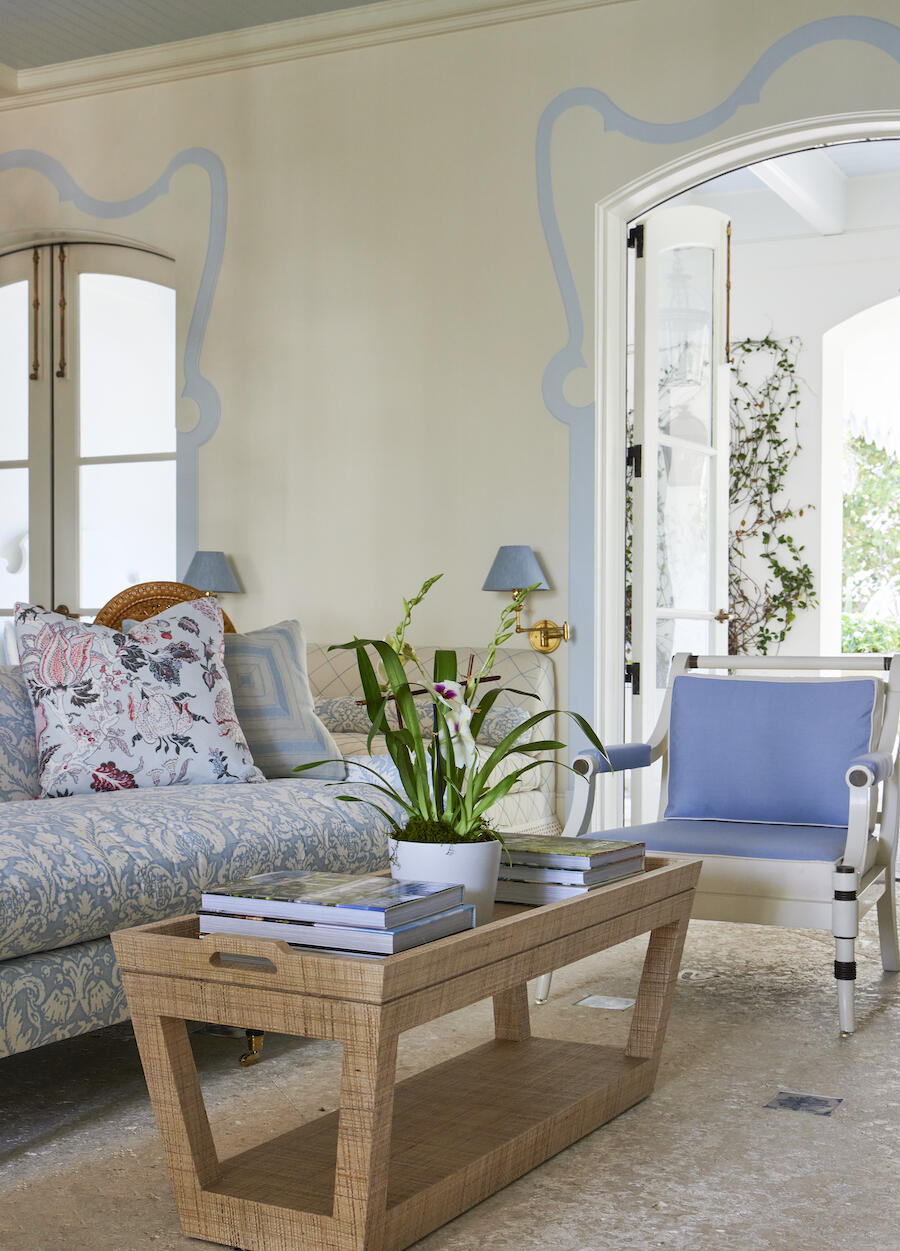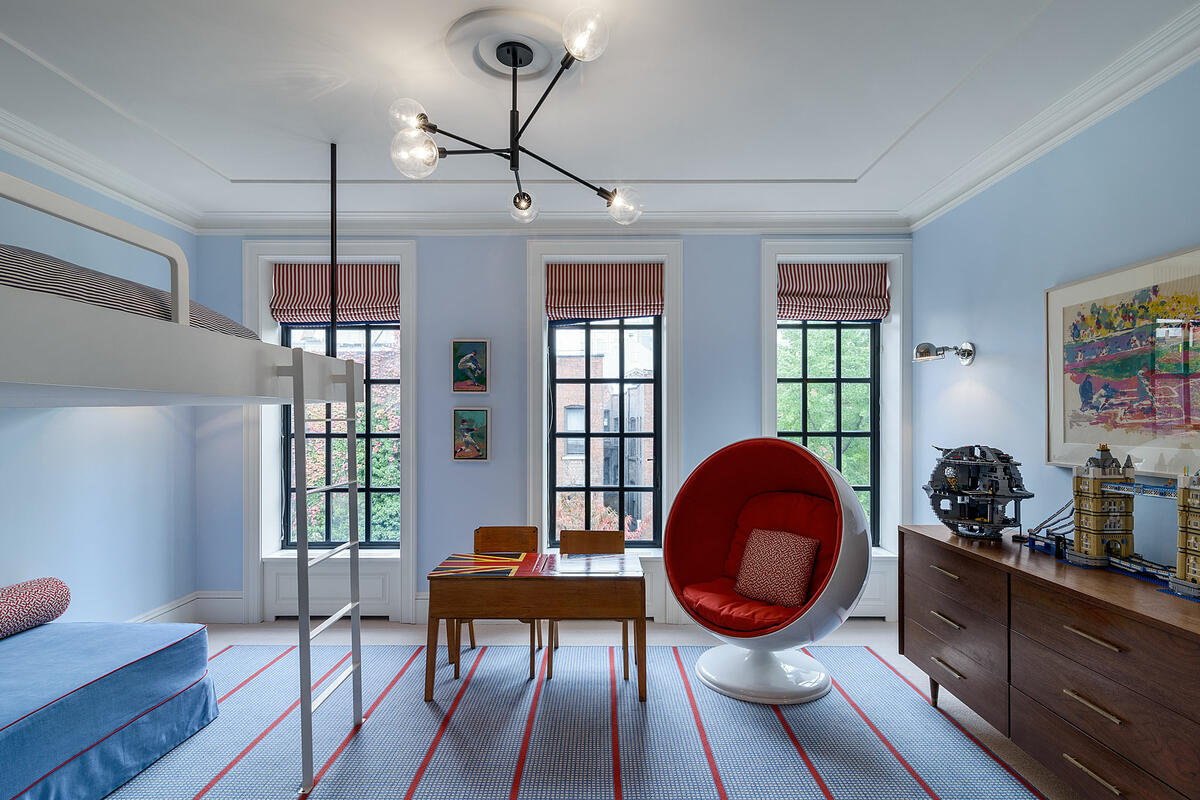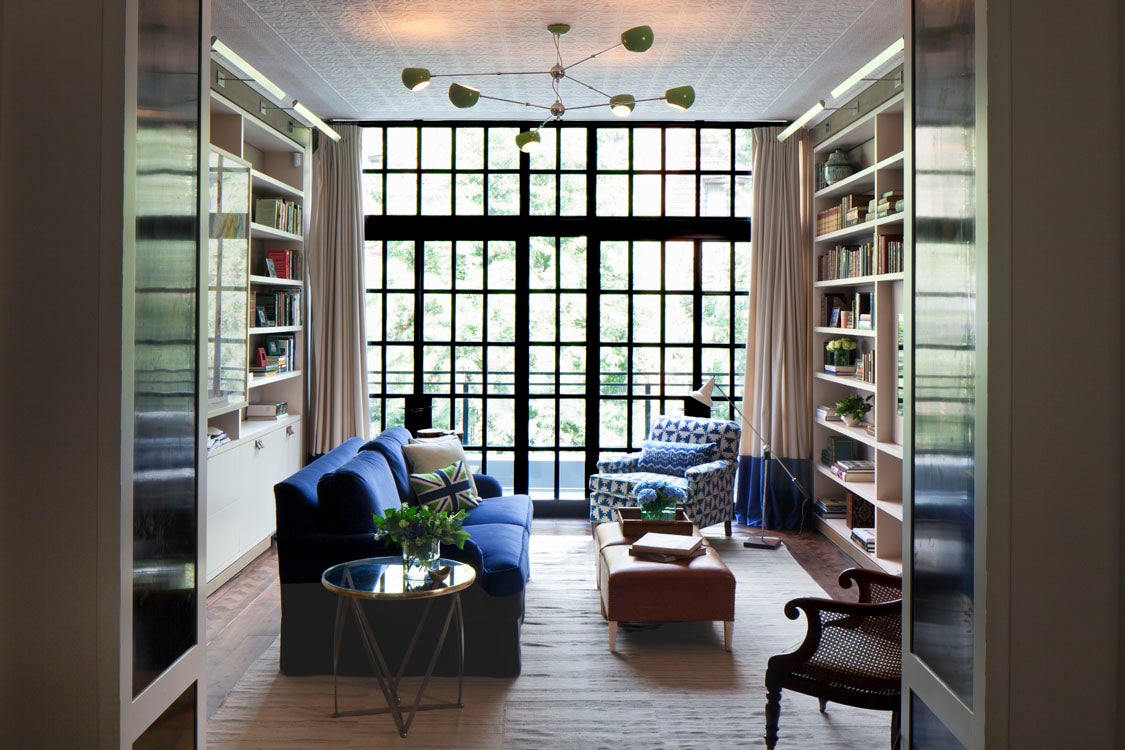In certain households, the family decorator is a trusted stalwart across decades and generations. The arrangement is mutually beneficial: Designers can grow their business with ease while clients get the benefit of continuity and a deep relationship. But what do those dynamics look like up close, when designers are working with kids, parents and grandparents, all with varying budgets, tastes and influences?
“Surprisingly, no drama,” says Alessandra Branca. “Typically these projects are with clients with whom we have completed numerous projects and are very much a part of the next generation’s life.” Branca, who was born and raised in Rome, says cross-generational decorating is more common for Europeans and Brits. “[These] relationships have historically been more about the structure itself, not the current inhabitants. Homes have been transferred from generation to generation. The home is a character, with its own history and future legacy. I’ve had this with projects in the U.S. as well … but not as often.”
Stateside, that dynamic may reverse, making family referrals less about heirloom homes than intergenerational connections. “Our internal expectation from the time we first opened [in 2005] was that we would grow with a client and inherit their children,” says Mara Miller, co-founder of New York husband-and-wife firm Carrier and Company. “When working for well-established firms [before launching our own business], that’s what Jesse and I saw. Parents usually help their kids with the first apartment, and it’s a family affair. There’s long-standing trust.” The generational flow sometimes goes up the family tree as well. Miller recalls undertaking a project with a couple and then later being hired by one of the parents. The younger couple was initially referred by the daughter of—you guessed it—another long-term first-gen client. “It really was a full circle.”

Plant the seeds
For veteran firms, working with the adult child of a client isn’t always a cash cow, but there’s a larger picture to consider. “Sometimes we’re a wedding gift,” explains Miller. “It’s joyful and fun, but [younger generations are] generally at a very different level. We take them on as a punch list item. It’s a thank-you for years of loyalty.” It also plants seeds for the future of the firm. That starter apartment could turn into primary or secondary homes down the road, with the bigger budget to match. Building relationships starts earlier than one might expect. Earning trust and confidence in every last member of the household can yield positive results down the road—even the resident 10-year-old is a potential future client.
“A 27-year-old may not be able to afford a senior-level design experience,” says Lisa Frazar of Studio Frazar, “but I have one client I’ve done five homes with, starting before her children were even born. I decorated nurseries, then toddler and teenage rooms. We shopped for dorms as a favor, and now those kids have purchased their own apartments.” In such cases, Frazar lowers her rates and lets go of the expectation of earning a profit—aiming mostly to break even on her time.
Roll with the changes
A three-decade relationship does not exist in a vacuum. An uncoupled adult child, says Frazar, is more likely to retain their parents’ designer. Once a significant other enters the picture, the dynamic inevitably changes. “Sometimes a new spouse tries to do it themselves or follow certain trends. That’s how you end up with those weird $20,000 bouncy chairs you can’t sit in, or offloading the sofa to friends. The parents call me to save their kid when disaster strikes, and it usually strikes hard. It costs more money in the end.”
Her advice is to tread softly when doing triage. Rushing in, guns blazing, in a design “crisis” is not going to earn points with the younger set. Neither is assuming the next generation will want to live with designs that look like their childhood home’s interiors. “I go in gently as an advisor and facilitator,” she says. “I always regard their ideas with respect. I want to know their aesthetic and develop it with them.”
Frazar is mindful that younger clients don’t have the same financial resources as their elders, but she doesn’t compromise on quality. “I don’t buy cheaper; I just buy less. I still shop high-end custom items, and it can take six months or more. Maybe that allows time for their next bonus to come in. They’re not getting bills they can’t handle all at once.”
Learning opportunity
Working with younger clients on a budget may seem like a hardship, but it can just as easily be an opportunity. Miller uses these projects to train her junior staff, citing closet systems or window treatments as a perfect opportunity. “Maybe there’s no workroom supporting the project because the budget is lower, and it’s a nice way for junior designers to learn how to take measurements for a retail drapery install,” she explains. “They learn to think about the length of the rod, the studs in the walls. The stakes aren’t so high, but they’re taking full responsibility for a real-world experiment.”
When it comes to the design process, designer Zoë Feldman observes it’s never too early, or too late, for clients to hone their tastes. On a Capitol Hill brownstone project with one couple, and shortly afterward with their millennial son and his husband at their home in another part of D.C., both parties were equally sophisticated, and simultaneously eager to expand their knowledge. The parents wanted their city home to have a very different mood from their coastal New England roots, and began collecting new art in earnest. The younger couple, by contrast, are very avant-garde. They used a lot of color, including a bright yellow custom range and hood in the kitchen, and collected art that was decidedly edgier. “‘What’s my dad going to think about this,’ came up a few times,” she recalls. “If the parents’ home was 80-20 classical with funky elements in small moments, the son’s home was the reverse.”

Value proposition
The millennial couple also cautioned Feldman not to let them go too far, aiming to invest in a place to grow into, not one where they would out-trend themselves in a few years. That’s an admirable perspective for first-time homeowners, who, according to designer Timothy Brown, can find the concept of long-term value challenging. “There’s usually a different understanding of spending compared to their parents’,” he explains. “They start realizing everything costs more than they thought, and it can be hard to explain that I’m trying to give them the best possible apartment, not just make my commission.”
Younger clients can also be less concerned with personalization and more focused on investment growth. In that case, encouraging younger clients to prioritize capital improvements for a better ROI can be a helpful persuasive tactic. “I walk them through how to make choices that increase the property’s value for a better return,” says Brown. “You need to repaint the walls properly, even if they were painted when you bought it. You have to fix the floors now, before you move in, because you’ll never want to move all your furniture out again. You’re going to be here for five or 10 years. The bones need to be good.”
Sometimes first-time homeowners feel pressure from an older generation to allocate funds to decorating but would rather see that money—either their own or mom and dad’s—spent on something else, like Gucci bags or a trip to Lamu. That disconnect creates tension. In this situation, experienced designers focus on building trust and listening, no matter what their own relationship is with the parents. It can take time to comprehend the monetary value of design, although it’s easier if you grew up with it. “If the parents had decorators, the kids understand that Mom paid someone so that everything always looked beautiful and felt good, and it made life nice. Now you’re grown and it costs X amount of dollars for house cleaners, for a makeup artist, for Timothy Brown Studio—it’s all something you have to pay for and decide what’s most important to you,” says Brown.
A major perk of keeping it in the family? Hand-me-downs. “Ninety percent of my clients are big collectors,” says Frazar. “When kids can pick pieces from their parents’ collection, it’s cheap [for them], it makes a younger apartment special and it’s much more green than picking a bunch of junky furniture that ends up in a landfill.” Branca agrees: “I have a number of clients with an organized inventory for their different homes. It’s often made available to the whole family. Having wonderful things from your childhood, even if redesigned and restyled, brings far more character to a home than all-new and showroom-bought. Now that the 1970s and ’80s are back, shopping your parents’ closet is better than going to dealers!”



























